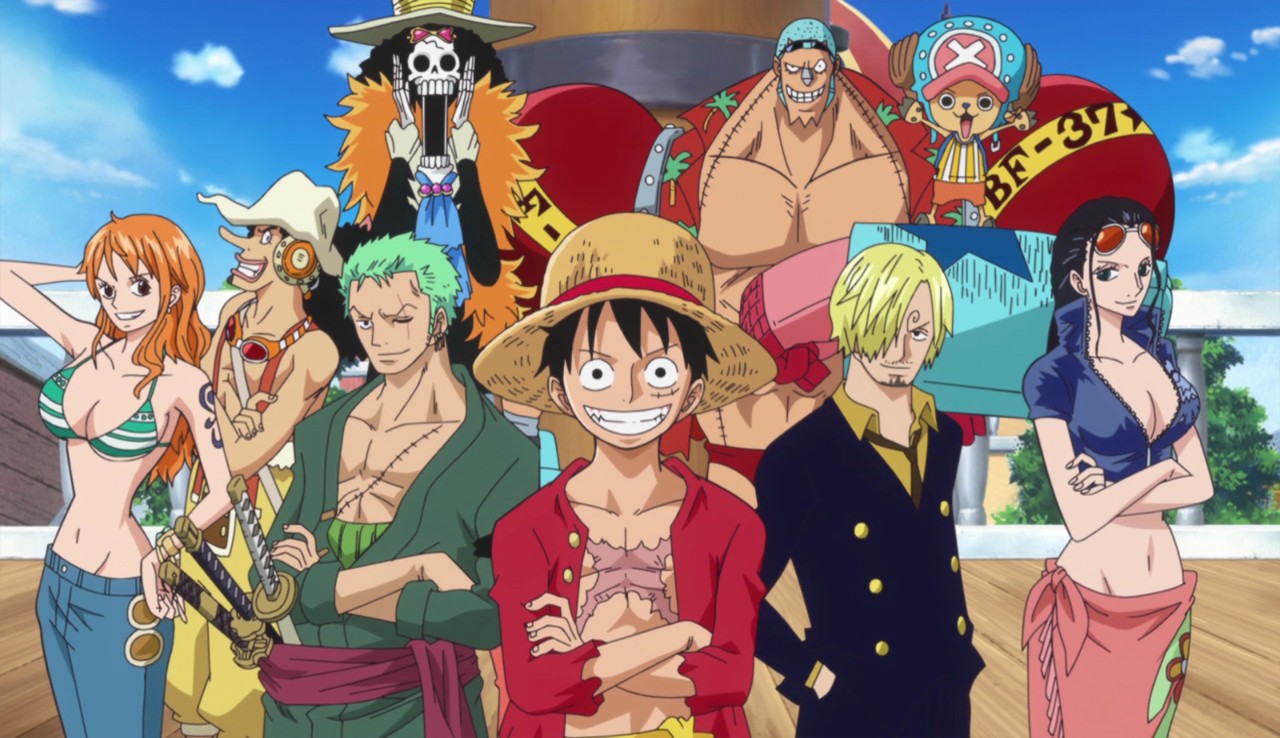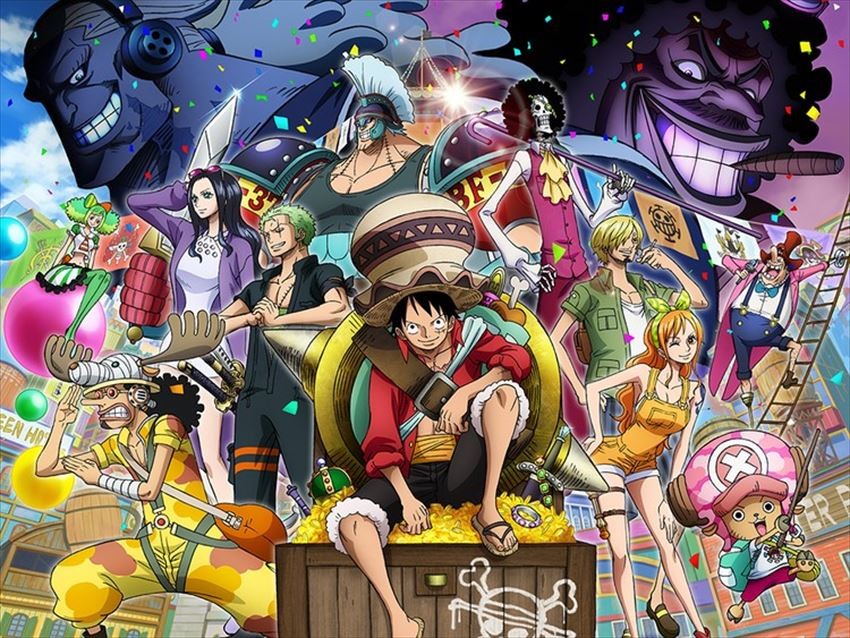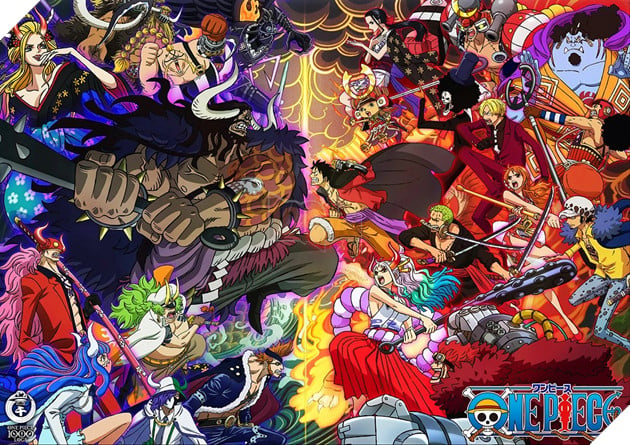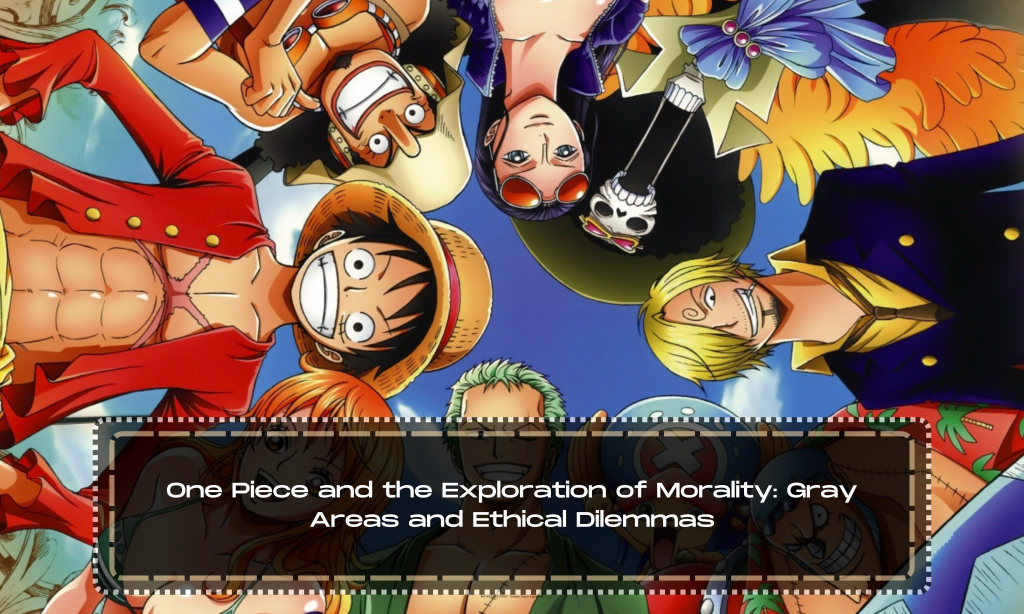One Piece and the Exploration of Morality: Gray Areas and Ethical Dilemmas
Ahoy, fellow adventurers of the Grand Line! Join me as we embark on an extended voyage through the moral complexities of “One Piece,” a world where the boundaries between good and evil are often blurred. In this exploration, we’ll plunge even deeper into the gray areas and ethical dilemmas that define the series, challenging our perceptions of right and wrong.
1. The Ambiguous Nature of Pirates: Redefining the Swashbuckling Stereotype

“In One Piece,” pirates have long been perceived as the quintessential villains, but the series relentlessly challenges this stereotype. The Straw Hat Pirates, led by the charismatic Monkey D. Luffy, are a prime example of pirates who defy traditional expectations. They are guided by their own moral code and often stand up against oppressive forces, raising profound questions about the nature of piracy and the pursuit of freedom.
Expanding on this point: Let’s delve deeper into the Straw Hat Pirates’ moral code. Their adventures often involve acts of kindness and justice that defy the conventional image of ruthless pirates. Their loyalty to each other and their commitment to their personal ideals are a testament to the complexity of their characters.
2. The Government’s Shady Actions: Shadows in the Hallowed Halls
The World Government, which governs the world of “One Piece,” is often depicted as a corrupt and authoritarian entity. Its actions, including the notorious Buster Call and the morally questionable Seven Warlords system, are glaring examples of the abuse of power. As we scrutinize the government’s actions, we are forced to question the legitimacy of authority within the world of the series.
Expanding on this point: Let’s explore specific instances where the World Government’s actions have had far-reaching consequences. For instance, the tragedy of Ohara and the government’s desire to suppress the knowledge of the Void Century are prime examples of its morally questionable deeds.
3. The Moral Quandaries of Devil Fruits: Temptations and Consequences
Devil Fruits, the supernatural abilities that grant extraordinary powers in “One Piece,” serve as a double-edged sword. The relentless pursuit of power through the consumption of these fruits often leads to profound moral dilemmas and ethical compromises. Characters must grapple with the consequences of their choices, such as sacrificing their humanity for the sake of strength.
Expanding on this point: Let’s explore the backstories of characters like Nico Robin and Trafalgar Law in greater depth. Their interactions with Devil Fruits and the moral dilemmas they faced in their pursuit of their goals add layers to the discussion of ethics in “One Piece.”
4. The Complexity of Character Motivations: Layers of Gray

Characters in “One Piece” are far from one-dimensional. They possess intricate motivations that drive their actions. Antagonists like Nico Robin and Trafalgar Law have histories and goals that challenge the simplistic view of good versus evil. Their actions are often propelled by personal trauma and a fervent desire for justice, blurring the lines of morality.
Expanding on this point: Let’s analyze specific character arcs, such as the tragic history of Nico Robin, and explore how they have contributed to the moral complexity of the series. We can also delve into the evolution of these characters and their shifting moral compasses.
5. The Sacrifices of Heroism: The Weight of Noble Deeds
Heroic acts in “One Piece” often come at a significant cost. Characters must make gut-wrenching choices, including sacrificing their own well-being or the lives of their comrades, to achieve their goals. These sacrifices serve as poignant reminders of the moral weight of heroism and the toll it exacts on individuals.
Expanding on this point: Let’s dissect specific instances of sacrifice within the series, such as the Marineford War and the emotional turmoil faced by characters like Luffy and Ace. These moments showcase the ethical complexities of heroism and the profound impact of such sacrifices on the story’s narrative.
6. The Gray Characters: Shadows of Ambiguity
Throughout the series, “One Piece” introduces characters who dwell in moral gray areas. The revolutionary leader Dragon, the enigmatic Crocodile, and the honorable former pirate Jinbe are prime examples of characters with complex motivations and shifting alliances that challenge traditional notions of heroism and villainy.
Expanding on this point: Let’s explore the intricate web of relationships and allegiances these gray characters navigate. How do their choices and actions blur the lines between good and evil, and how does this contribute to the moral richness of “One Piece”?
7. The Role of Redemption: Paths to Atonement

“One Piece” delves into the concept of redemption, allowing characters who were once considered antagonists to find redemption and join the ranks of the heroes. This recurring theme underscores the series’ belief in the potential for growth and change, even in those who have committed questionable acts.
Expanding on this point: We can dive into the redemptive arcs of characters like Jinbe, who transitioned from being a former Warlord of the Sea to a trusted ally of the Straw Hat Pirates. How does “One Piece” portray the process of redemption and the moral journey of its characters?
8. Conclusion: Navigating the Moral Compass in a Sea of Gray
As we conclude our odyssey through the moral complexities of “One Piece,” we must reflect on the series’ profound impact on its audience. “One Piece” is not merely an epic adventure; it serves as a reflection of the moral complexities of the real world. The series challenges viewers to navigate the moral compass of its characters and the ethical dilemmas they confront.
As we sail alongside Monkey D. Luffy and his diverse crew, we are reminded that the world is not merely divided into good and evil but is painted in various shades of gray. “One Piece” invites us to explore these gray areas and consider the ethical dilemmas that shape the choices and destinies of its characters. In this ever-expanding sea of moral ambiguity, “One Piece” remains an enduring beacon of thought-provoking storytelling.
That’s me, Andreea Blaga, author of the blog anime-everything.com. I work as a content creator in the US. I am also passionate about Japanese Anime.


Related post
The Art Style of Solo Leveling: A Visual Feast for Readers
On this pageOne Piece and the Exploration of Morality: Gray Areas and Ethical Dilemmas1. The...
Oct
Why JJBA is the Most Bizarre Anime Ever Made
When discussing iconic anime series, one title that consistently stands out is “JoJo’s Bizarre Adventure,”...
Oct
The Impact of Wind Breaker on the Sports Anime Genre
The sports anime genre has seen numerous iterations over the years, captivating audiences with its...
Sep
Decoding the Enigmas: Exploring the Hidden Secrets of Gravity Falls
“Gravity Falls,” created by Alex Hirsch, is a beloved animated series that has captivated audiences...
Aug
The Rise of Kaiju No. 8: A New Era of Monster Manga
The world of manga has always been rife with innovative storytelling and vivid illustrations, but...
Aug
Character Study: Korra and Aang’s Legacy
In the richly woven tapestry of the “Avatar” universe, the characters of Korra and Aang...
Jul